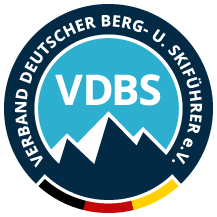Subchapter: Climbing grades
Climbing grades
DIFFICUTLY AND SERIOUSNESS OF A TOUR
The difficulty of climbing (sport or traditional), boulder, ice or mixed routes is described using a difficulty scale. In alpine climbing, the general difficulty stems from the most difficult pitch of the entire climb. However, there are different rating scales for climbing depending on the region and country. The most widespread in the Alpine region are the UIAA Scale and the French scale.
In contrast to sport climbing, the route is not represented by the difficulty alone in alpine climbing. The same climber may be able to climb a well-secured sixth-grade route without any problems but will struggle to cope on a barely protected, exposed grade-four alpine route. That’s why seriousness ratings such as the E-scale also come into play in alpine climbing. This does not describe the climbing difficulty, but rather the safeguarding, the risk of accident and the psychological requirements.
DIFFICULTY OF A ROUTE
It should be mentioned beforehand that a route’s difficulty rating is always subjective. In addition, there are differences in the rating from country to country, and from region to region. If a location is unknown, you should factor in reserves.
IMPORTANT: Difficulty ratings on an indoor climbing wall cannot be applied to alpine routes. Therefore: start off slowly!

Seriousness of a route
The E-scale is intended to reflect the seriousness of a route. The amount, quality and distance between the intermediate belay points as well as the rock quality and the remoteness of the route are incorporated in this.
| Rating | Explanation |
|---|---|
| E1 | Bolted routes secured for sport climbing: short distances between hooks |
| E2 | Route with above-average safeguarding: good equipment available, only little of your own safeguarding required, some greater distances between hooks S = Basic mobile belaying; R = low, dangerous falls possible in parts but unlikely, hardly any objective dangers; P = low |
| E3 | Route with average safeguarding: additional safeguarding required, still relatively simple S = average skill with anchoring; R = dangerous falls can largely be avoided with your own safeguarding, few objective dangers; P = medium |
| E4 | Alpine route with poor safeguarding: your own safeguarding must be provided, even in difficult areas S = safe handling of mobile belay equipment; R = dangerous falls can be largely avoided with consistent safeguarding technique, runouts in easy terrain, possibility of objective dangers or difficult retreat options; P = medium-high |
| E5 | Route is difficult to secure: the route is poorly secured and cannot be secured or can only be secured with difficulty in some areas – long runouts to tackle S = safe handling of all belay equipment; R = falls are dangerous in difficult passages; P = high |
| E6 | Very serious route, cannot be secured over the longer passages, even in the difficult pitches. Falls will have fatal consequences at critical points. S = perfect handling of all belay equipment, even exotic equipment; R = dangerous route with very high risk of accident; P = very high |
| S | How well does the climber need to be able to handle belay equipment, and what belay equipment is required? |
| R | How high is the risk of accident or injury (especially if you have overestimated yourself?) |
| P | What are the demands placed on the climber’s mind or mental abilities? |

